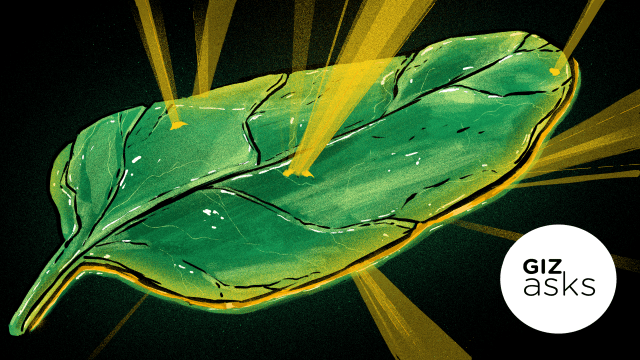The first thing to realise is that new-year resolutions are a self-defeating sham inimical to the process of real and lasting change. The second thing to realise is that you will never change. But you can, maybe, eat a bit better. We all know, basically what that entails”willpower, produce, maybe some kind of juicer”but it’s easy to get lost online, where counterintuitive, contradictory, and flatly absurd advice proliferates beneath every half-hearted “˜healthy diet’ search. And so for this week’s Eric B. Rimm
Professor of Epidemiology and Nutrition at Harvard University
All of the TV media “medical” darlings love the term”superfoods.” In this world of exaggerated and superfluous terms, “superfoods” is one of my absolute least favourites. Ironically, it may be more important to find foods to avoid then to focus only on a few foods we think are exceptionally beneficial.
For example, a diet rich in berries, coffee, fish, and lightly processed whole grains does not cancel out the impact of a dinner with a double bacon cheeseburger, ketchup, 60 french fries, and a soda. Foods are not like a drug which has a well-established molecular target with a direct treatment benefit. Foods are awesome because they represent hundreds of compounds with thousands of biological effects.
Even better is that a blueberry is different for you and for me, in part because of differences in our microbiome, but as important, I may have my blueberries on top of 1% yogurt and bran flakes and you may have yours on top of a full fat strawberry sundae with chocolate syrup and whipped cream. Funny thing is that with our current technology and research, I don’t know which of us would benefit more from the blueberries (or, ironically, which of us would enjoy this meal more!)
Christopher D. Gardner
Professor, Medicine, Stanford Prevention Research Centre, whose research focuses on investigating the potential health benefits of various dietary components or food patterns
It can be confusing, and controversial to try to oversimplify food (i.e, this is the one best thing to eat), because some people try to “game” the system, eating poorly all day except for the one “healthiest” thing and feeling like they’re choosing well overall.
Rather than bickering over grains, red meat, dairy, or other tribal issues, I’ve been trying to think more aspirationally.
Human health is one issue. Taste is critical and shouldn’t be left out”we need to bring the pleasure and joy back to food. Environmental health is another issue that is gaining momentum in the food world (GHG, water usage, land usage/biodiversity). And there are many social justice issues that are relevant (e.g., fair wages for people working in agricultural settings”crop harvest, slaughterhouses). So, my aspirational goal is for people to look into these different areas and find the foods or dishes that are in the sweet savoury spot at the intersection of human health, great taste (unapologetic deliciousness), environmental health, and social justice.
And for this, there are hundreds of examples”although, to be fair, getting it right means finding out who grew the food, where, how, etc.
Marion Nestle
Professor of Nutrition, Food Studies, and Public Health and the author of Food Politics, among other books
One of the main principles of healthy eating is variety”consume a wide variety of relatively unprocessed foods. No one food meets all nutritional requirements. Some foods have more of required nutrients than others, which is why it’s good to mix and match. With that said, vegetables! Eat the ones you like.
Daphne Miller
Clinical Professor at the University of California San Francisco, Research Scientist at the University of California Berkeley School of Public Health, and founder of the Health from the Soil Up Initiative, who studies the connections among health, culture, and agriculture
Your lawn.
It’s an easy recipe: first, stop using herbicides and fertilisers on your lawn. Next, read Gaia’s Garden, a guide to home scale permaculture by Toby Hemenway, and start making soil lasagna (or sheet mulching, as he calls it). It can swiftly transform the lifeless dirt beyond your front door into carbon-rich soil, exploding with microbes and worms. All you need is manure, leaves, your neighbour’s discarded Amazon cardboard boxes, and water.
Then plant a garden.
What to plant? Spices like oregano or thyme are rich in anti-inflammatory phytonutrients (antioxidants) so put them everywhere. Plus they repel noxious insects. Tomatoes are chock full of lycopene (good for the prostate and breast) and carrots have lutein (good for the eyes), while kale is an excellent source of iron and good chow for the healthy microbes in your gut. Basically, plant a rainbow on your lawn and don’t worry about the weeds, because most of them are even better for you than the vegetables. Oxalis, or sourgrass, a common garden weed, is high in vitamin C, and mallow, another garden invasive, is super tasty and has more calcium than kale!
And there are other reasons why an edible lawn is the healthiest thing you can eat. Researchers in Colorado found that planting food next to footpaths and on front yards, strengthens neighbourhoods, cuts down on crime, and builds what is calls “collective efficacy.” In general organic food has more nutrients than conventionally grown food, and you can be sure that no chemicals have entered your edible lawn. Researchers in Europe and the U.S. discovered that children exposed to soil on sustainable farms are less likely to develop things like eczema, allergies or asthma. There is no reason why your edible lawn can’t confer this same benefit.
One specific type of microbe, isolated from healthy soil, seems to trigger nerve pathways that improve mood and promote a sense of wellbeing. And then there’s all the exercise: the squatting and lifting required to build good soil and grow vegetables.
Happy digging!
